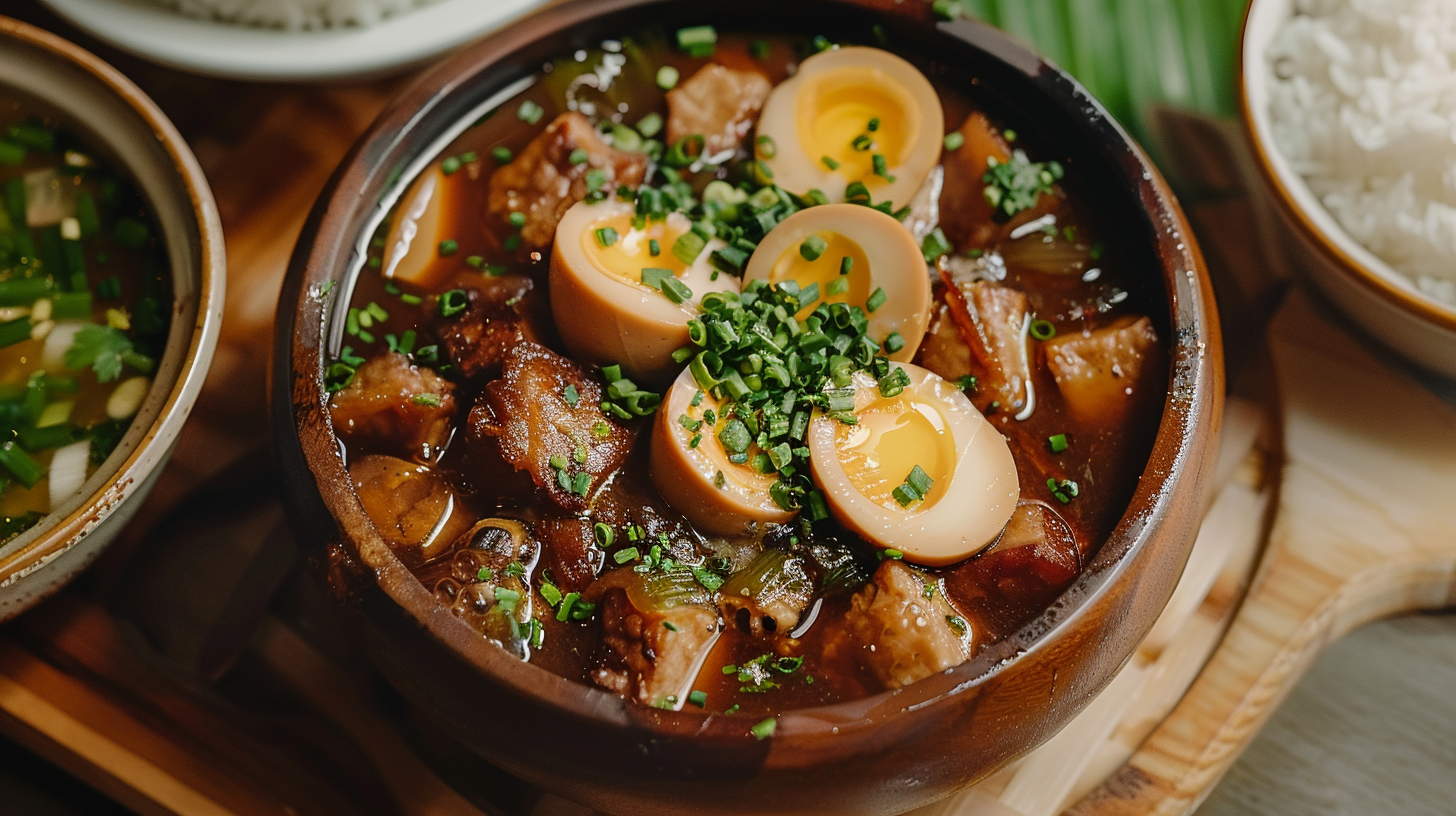Key points
• Focus on Authenticity: To present Filipino food accurately, you need to capture its bright colors, textures, and the way it’s served. This kind of genuine portrayal shows off the cultural background of the meals.
• Show Off Ingredients: Highlighting fresh key ingredients, such as calamansi, ube, and lechon, tells the story of where the dish comes from and what it tastes like.
• Tell a Cultural Story: Add elements that reflect Filipino culture, like traditional pots or a typical eating setup. This adds meaning to your food photos, taking viewers into the Filipino lifestyle.
Contents
- Key points
- Looking at How Food Looks Matters
- Exploring the Charm of Filipino Food
- Taking Pictures of Filipino Food
- Simple Tips for Making Your Food Photos Pop
- How to Photograph Filipino Food
- Keeping It Real in Food Photos
- Ways to Keep Filipino Food Authentic in Photos
- Difficulties in Showing True Filipino Food
- Getting to Grips with Color Theory in Filipino Food
- Mixing Up Colors and Surfaces to Make Images Pop
- Exploring Filipino Food with Photos
- Tweaks in Filipino Food Photos
- Starting a Filipino Food Photography Business
- Building a Portfolio Centered on Filipino Cuisine
- Effective Marketing for Filipino Food Photographers
- Working with Filipino Chefs and Restaurants
What Is Filipino Food Photography?
Filipino food photography is all about taking pictures that showcase the visual appeal and unique tastes of dishes from the Philippines. Photographers aim to do more than just make the food look good; they strive to express the long history of this cuisine, which is influenced by local, Asian, Spanish, and American cultures.
This type of photography is concerned with more than snapping photos; it’s a celebration and a record of the nation’s diverse culinary heritage. By utilizing different photographic methods and styles, photographers are able to capture the spirit embedded in every bite and gulp of Filipino cooking.
Looking at How Food Looks Matters
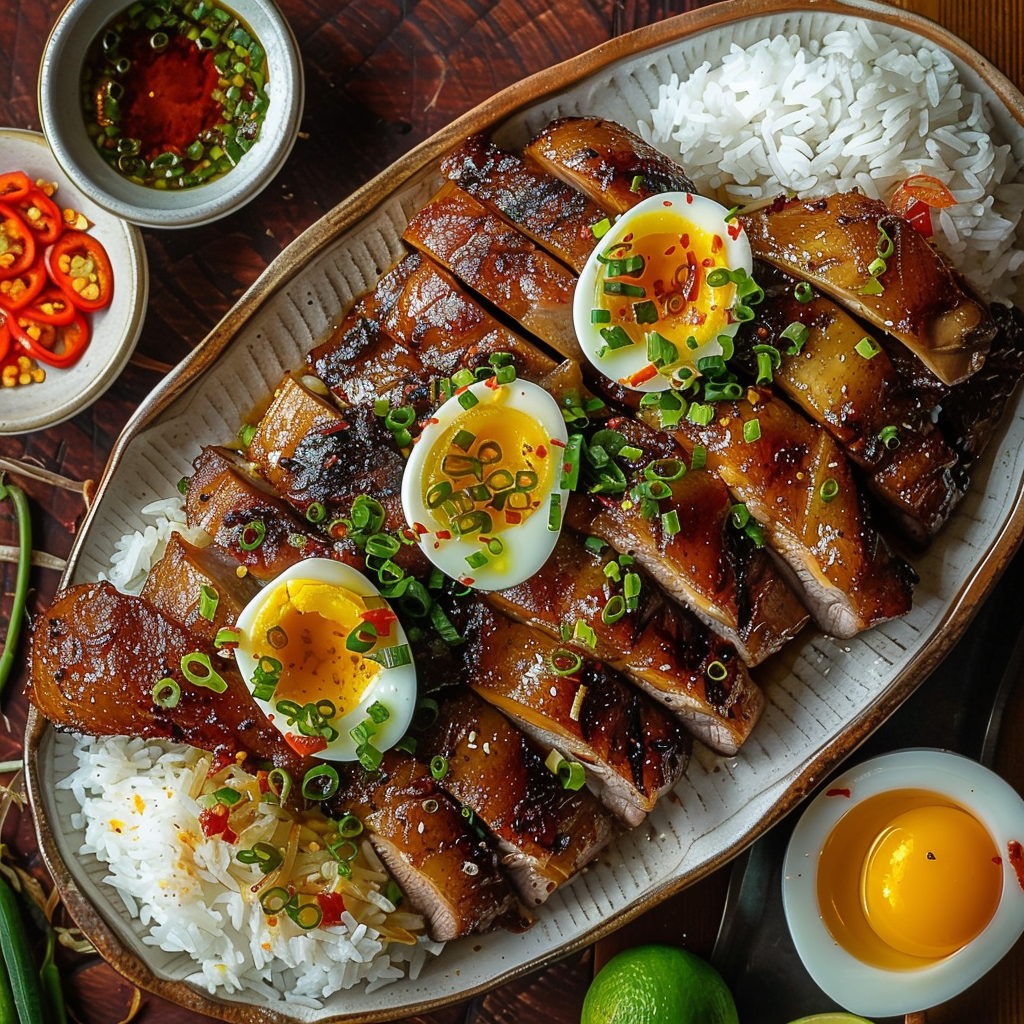
First impressions count a lot in cooking. What your meal looks like is the first thing you notice before you even taste it. It can really wow you or be a letdown. Chefs and foodies agree that how tempting a dish looks is just as important as how it tastes.
Why How Food Looks Is Important
The way a dish is presented is a chef’s secret weapon. It’s their way of telling a food story and prepping your taste buds. Plating is basically painting with food, where each piece is carefully placed to delight your senses. Looking good is powerful in food—it gets you excited, makes you hungry, and can turn plain eats into an amazing sight.
Taking Pics of Food Art
Pictures let restaurants and chefs show off their tasty dishes to the world. With everyone sharing pics online these days, a great photo can make someone want to eat your food and bring them through your door. Capturing Filipino dishes in photos adds more oomph with their bright colors and texture, making it stand out.
Photography Helps Sell Food
A top-notch photo of food does the selling without a peep. Great shots help eateries and brands talk to folks who might want to buy their food. The photos tell you about the fresh stuff they use, how much care they put into making it, and how authentic the meal is—getting people to come by or try cooking it themselves.
Pictures of Yummy Food Are Key
Don’t underestimate the power of mouthwatering food pics. They’re key in showing off cooking skills and marketing for food places. So taking pictures of Filipino dishes isn’t just clicking a camera; It’s big deal in sharing what Filipino flavors and traditions are all about.
Exploring the Charm of Filipino Food
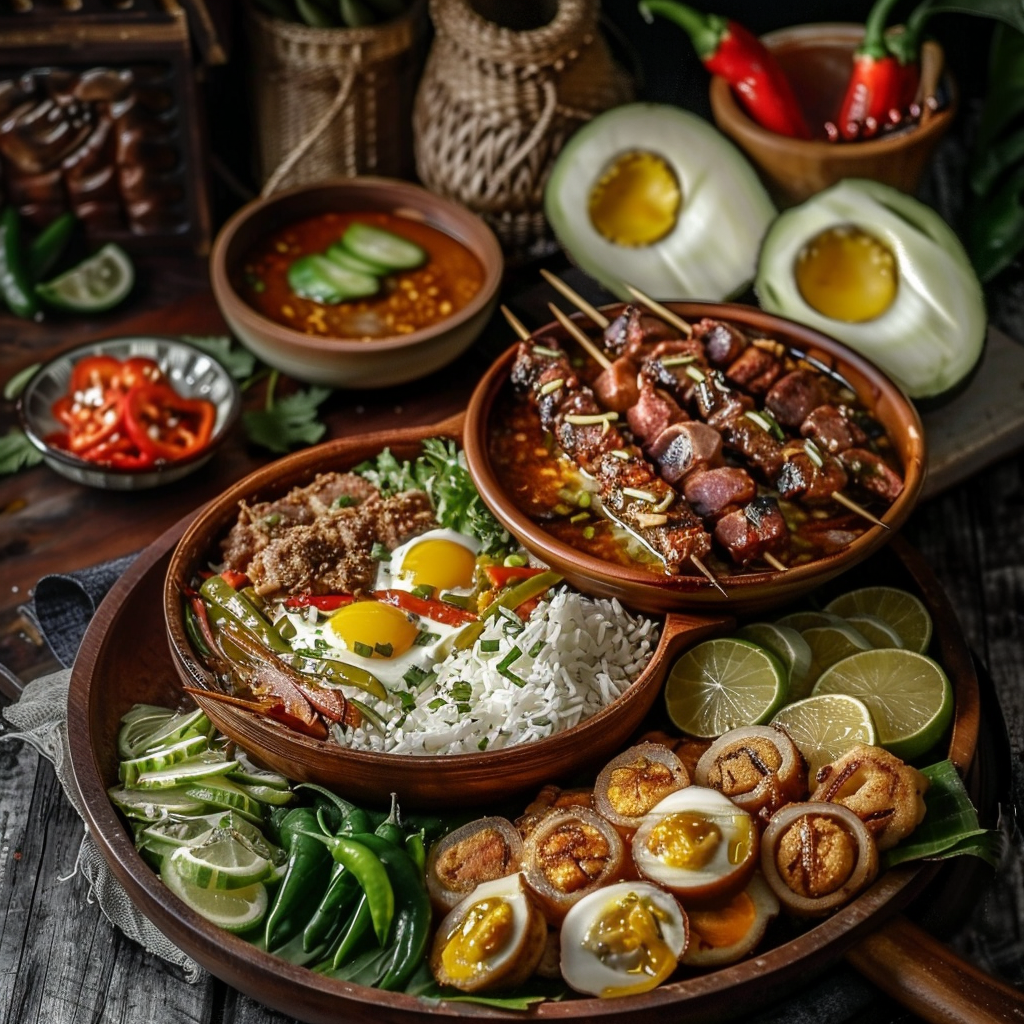
Filipino food bursts with eye-catching colors and a variety of flavors, showing off the nation’s cultural mix. The way Filipino dishes are photographed highlights this blend beautifully. Each dish narrates the blend of native customs combined with Asian and Spanish touches in their cooking ways. Photos spotlight the pure beauty and feel of the ingredients that make up Filipino meals. Rice isn’t just an extra; it’s the backdrop for a mix of tastes on top. Colors leap out at you, from ube’s bold purple to kwek-kwek’s striking orange, or laing’s rich greens, showing off the richness of the local environment.
They use ‘linamnam,’ a tagalog word for a type of tastiness that hints at a complex flavor profile, which should also pop in pictures to attract food lovers. So, photographers try to bring up a cozy, homey vibe in their shots. They might serve the meal on plates or banana leaves in a way that looks casual but is on purpose. It showcases the dishes in a way that feels friendly and easy to dig into, which is big in how Filipinos like to eat together. The aim is to pull in viewers to not only see how good everything looks but also to feel like they’re part of enjoying the generous spirit of Filipino life.
At its core, Filipino culture is about delicious, storytelling dishes. Each recipe is a chapter of the country’s saga, community vibes and handed-down rituals. Filipino meals aren’t just sustenance; they’re whole stories made edible.
The Past Shaping Filipino Dishes Today
The flip-floppy past of the Philippines, with all its colonial past and mixed trade ties, has molded how Filipino food looks. The Spanish era left behind things like adobo and lechon, served up in styles that remind people of Spanish parties. Then when the Americans were around, they introduced quick-fix eats, changing some age-old recipes to fit in with the rush and more laid-back eating spots.
Deep Meaning in Filipino Dish Shots
Photos of Filipino eats are full of deeper meanings. The photogs pick stuff on purpose that spins a yarn about the grub. Plating on banana leaves isn’t just chic, it also means celebration and realness. Plus, lively hues usually fill the photo, calling to mind the energy found in Philippine festivities.
A Taste Tour Through the Philippines
With its mass of over 7,000 islands, the Philippines enjoys a bounty of different local flavors. You’ll find wide contrasts from one region to another, mirroring the local landscapes, weather patterns and available goodies. Like, creamy curry numbers from Bicol are worlds apart from Luzon’s love for soy sauce and vinegar tang. Photos often spotlight these local flavors, proudly parading the geographic personal touches across the Philippines’ food scenes.
Taking Pictures of Filipino Food
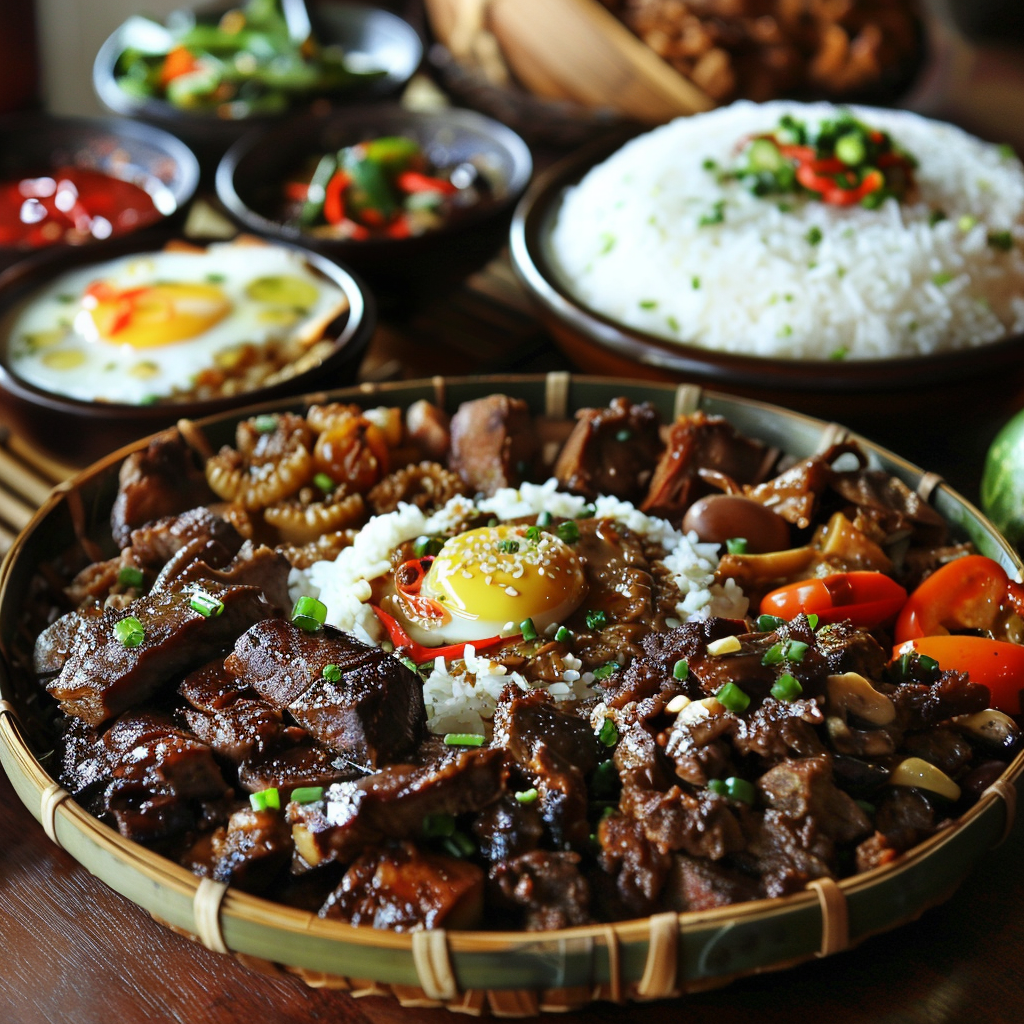
To snap really good photos of Filipino dishes, you need the right gear. A good camera with manual settings is key. Either a DSLR or a mirrorless camera should do the trick. They let you adjust important things like aperture, shutter speed, and ISO, which you need to get those mouthwatering pictures. Usually, an aperture from f/2.8 to f/4 makes the background blurry so the food pops out, and a quick shutter speed catches steam or movement sharply. Also, keep the ISO low to avoid noisy images. And don’t ignore the lens—a macro lens gets close-up shots full of detail, and a 50mm lens is great for general use without warping the image.
Simple Tips for Making Your Food Photos Pop
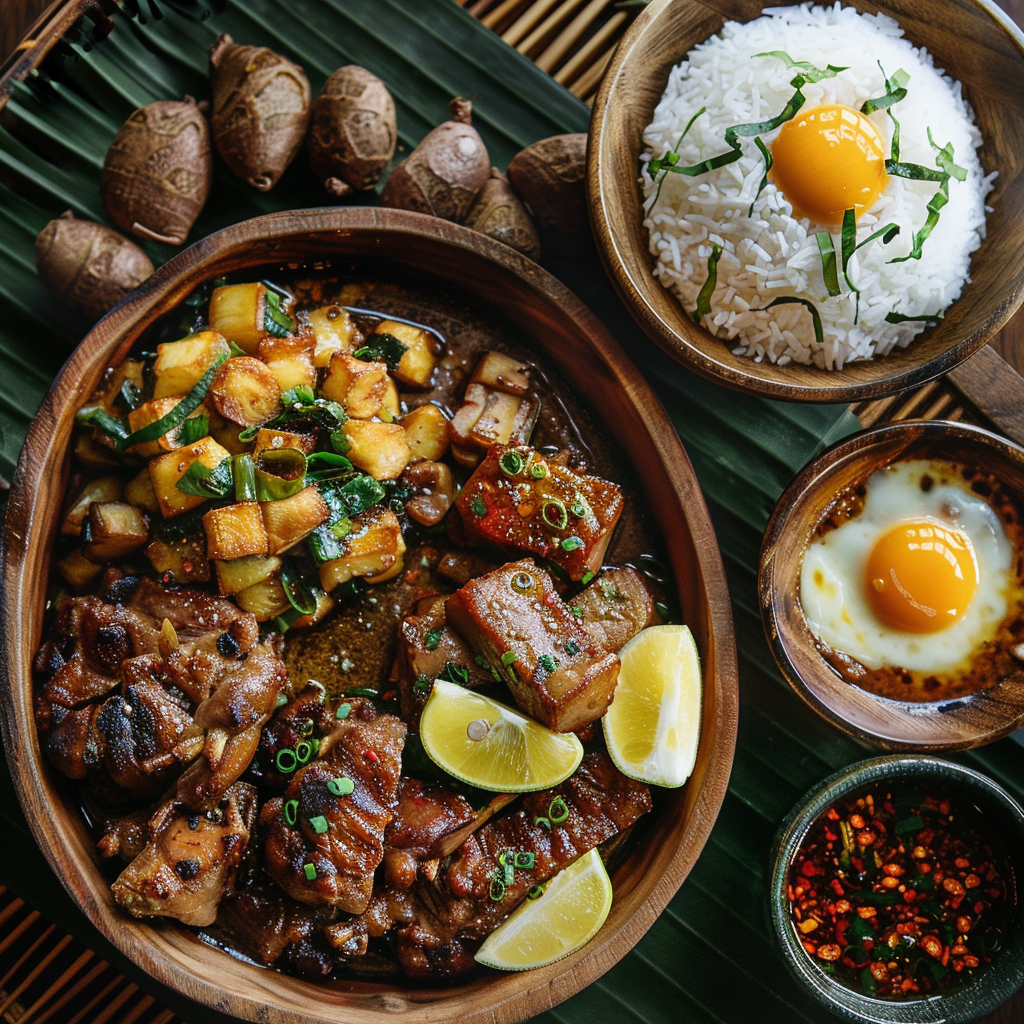
Light is a key element in taking great food pictures. It makes the colors and textures of the food stand out, and this is particularly true for the colorful dishes of Filipino cuisine. Using natural light is usually the best choice because it wraps around the food, making it look more attractive. But if you can’t get natural light, you can use artificial lights like softboxes to mimic this effect. Where you place the light is important too. If you light from the side, you’ll bring out the food’s texture; backlighting can give your dish a warm, inviting glow—just be careful not to cast any strong shadows that might make the photo less appealing.
How to Photograph Filipino Food
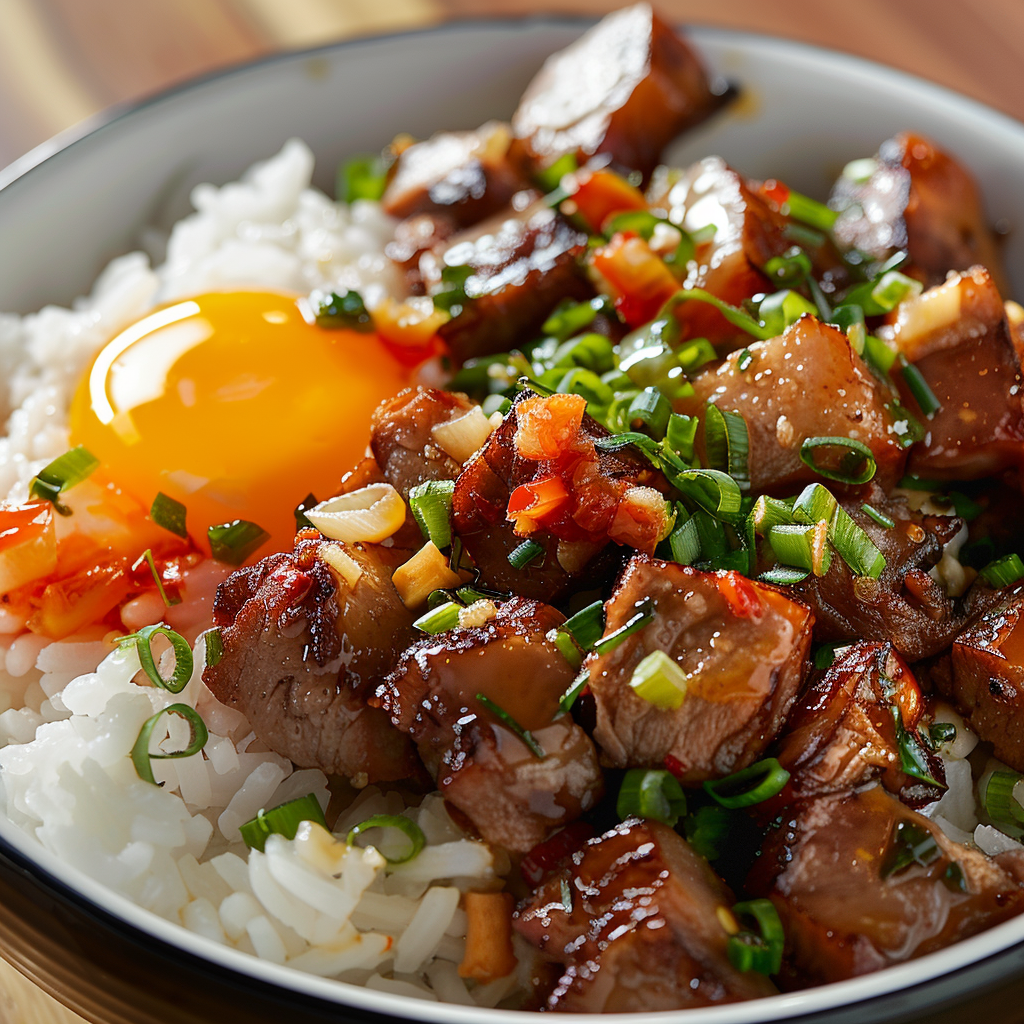
“You feast with your eyes first” is certainly true when it comes to snapping pics of food. When you’re taking photos of Filipino dishes, it’s more than just putting the food on a plate. You need to arrange it to highlight every ingredient and help it tell its tale.
Stick to the rule of thirds to get your photo just right, making sure it looks balanced and grabs attention. Throw in some extras like silverware, local fabrics, or raw food bits to really show off the Filipino vibe and make your pics pop. Don’t forget to try out different viewpoints. A bird’s-eye view does the trick for showing off a dish or a bowl of something yummy, and for tall treats or drinks, a direct shot from the front might be best.
Keeping It Real in Food Photos
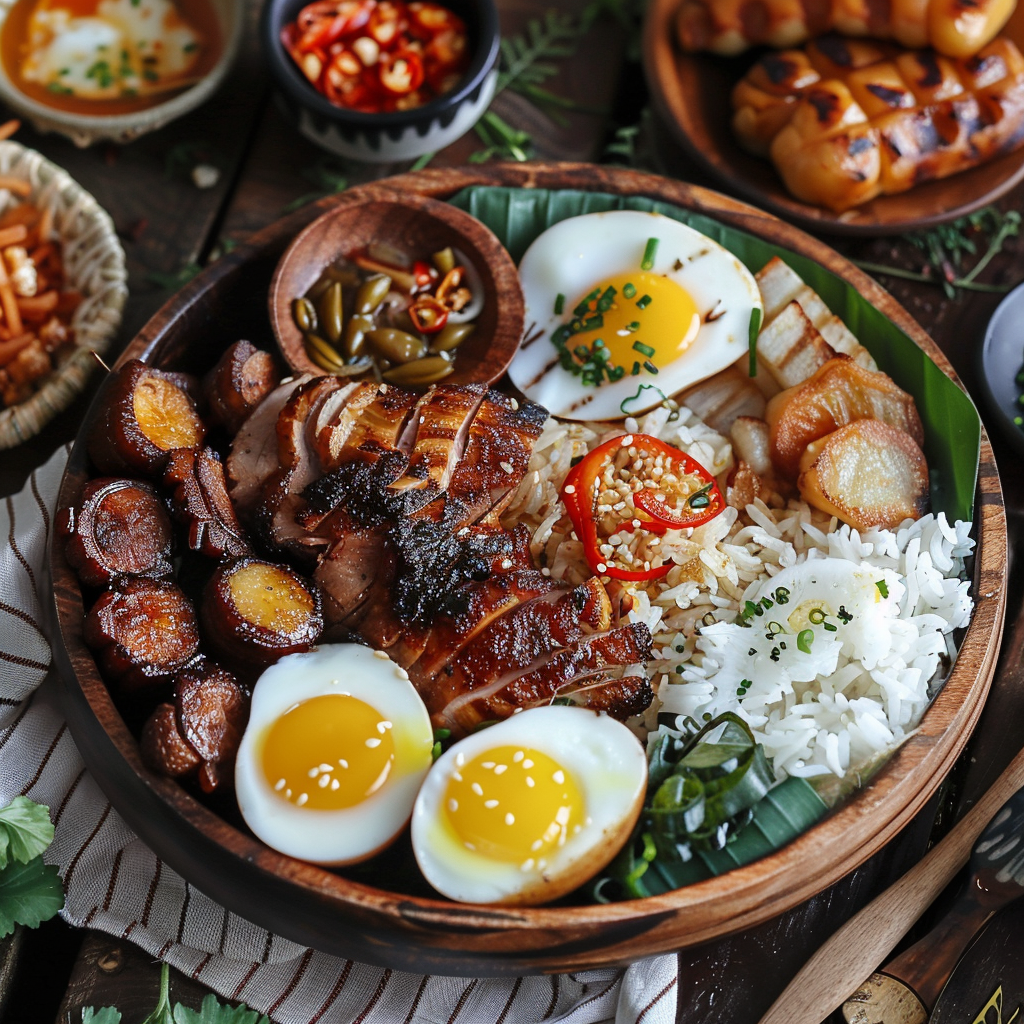
In food photography, it’s not only about making the dish look good. It’s equally important to keep things real. Authenticity matters because it shows the dish’s background, including its culture and history.
This is really true for Filipino food, where every meal has its own story. Photographs that capture this honesty can link you to how Filipino food is traditionally made, what local produce it uses, and how it’s about bringing people together.
Ways to Keep Filipino Food Authentic in Photos
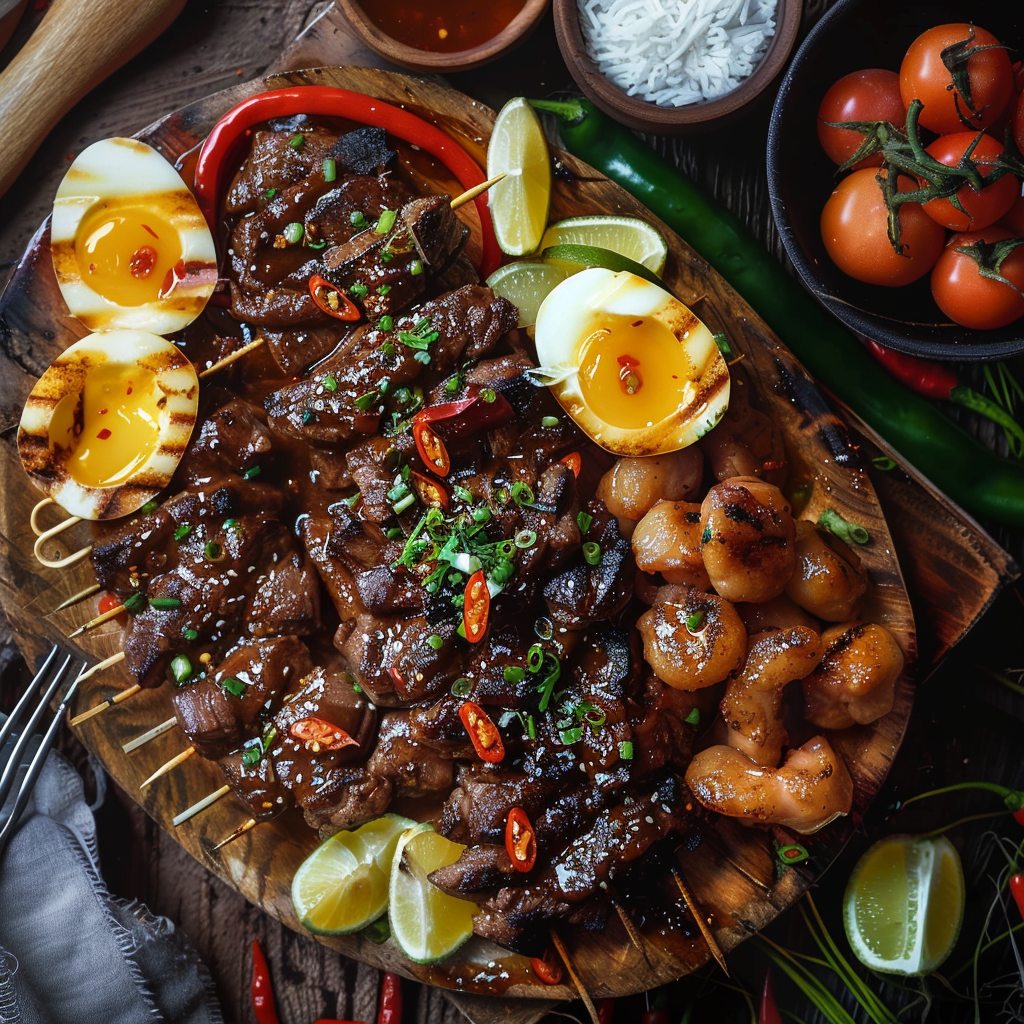
To keep Filipino food looking genuine in pictures, you should follow these tips:
- Choose the correct background: The backdrop is important. Props and backdrops that show off Filipino culture make the food seem more real.
- Use native ingredients: By using ingredients from the area and traditional elements, you put a spotlight on the dish’s heritage and share its story.
- Take advantage of daylight: Sunlight brings out the food’s true colors and textures, much like it would look in its original place.
- Add people in the picture: Showing a cook’s or eater’s hands makes the picture feel alive and shows how eating is a shared experience in the Philippines.
Difficulties in Showing True Filipino Food
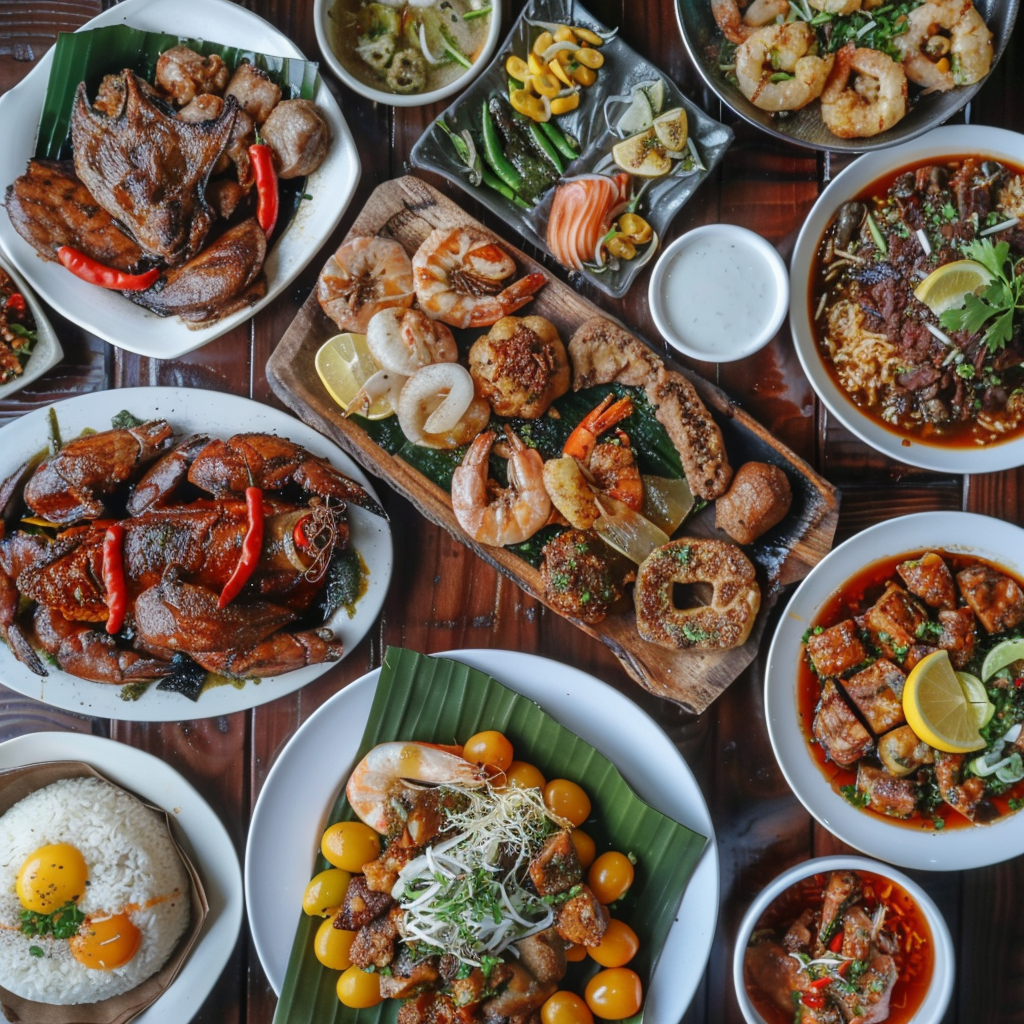
It’s tough to show the real deal of Filipino food. Here are some issues you might run into:
- Capturing all the flavors and feels of Filipino dishes in a photo is hard because there’s usually a lot going on in one bite.
- The unique colors and shapes of Filipino food might not look like what people usually think of as “pretty food,” so you’ve got to get inventive with how you present it.
- You have to walk a fine line between keeping it real for those who know their stuff and making it look good for folks around the world who might be new to it.
- With everyone getting into the latest food crazes, sticking to the old-school Filipino ways can be a bit of a juggling act without just going with what’s in vogue.
In short, capturing Filipino dishes on camera and keeping them culturally authentic is a challenge. It requires patience, a deep respect for heritage, and recognizing that these dishes tell the story of Filipino life, not just something to fill your stomach.
Getting to Grips with Color Theory in Filipino Food
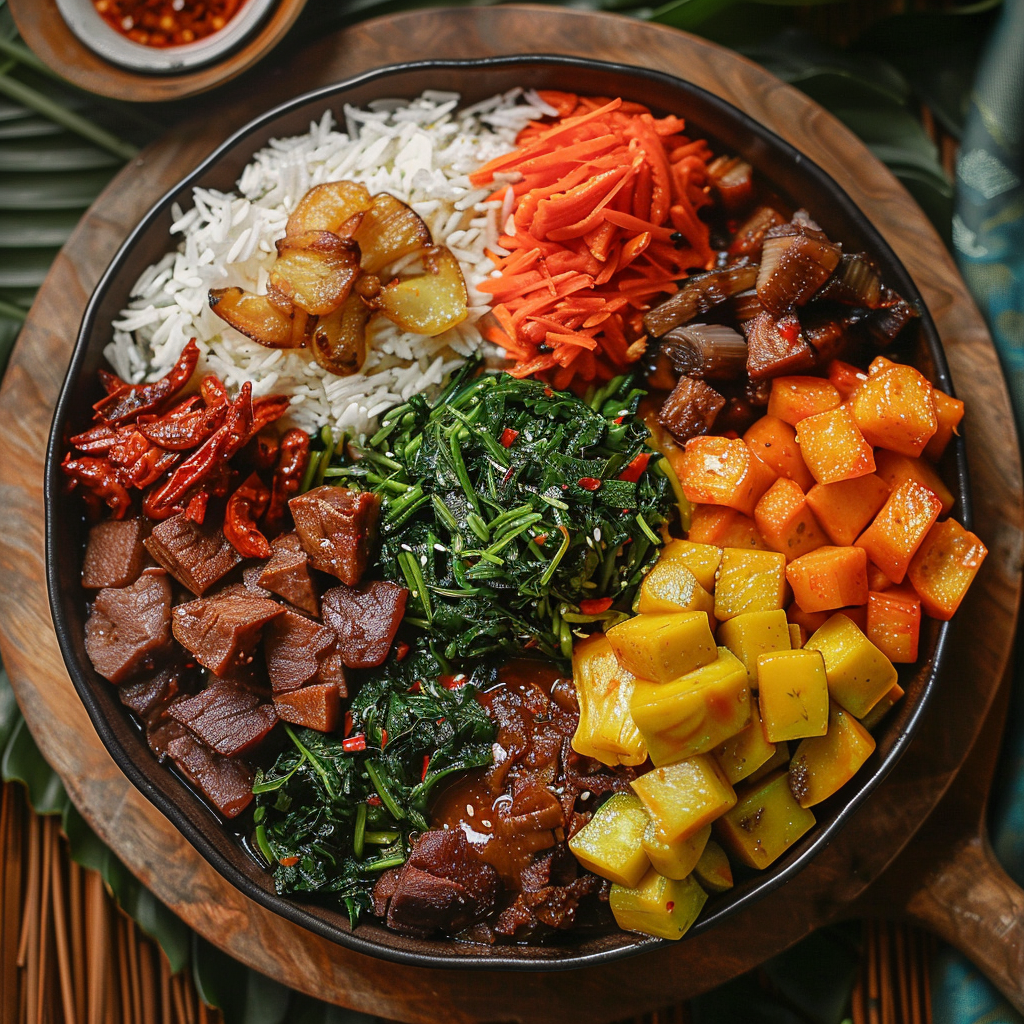
Color is super important in taking pictures of Filipino dishes. It isn’t just about looking nice; it’s about sharing a story and feelings. Knowing which colors to use can make foods like adobo or sinigang really stand out. Bright, warm colors tend to make us think of cozy, tasty food, while cooler colors can make us think of something fresh and light. Good use of color theory is all about understanding how different colors go together and how they can make food look super yummy.
Showing Off Textures to Make Food Look Amazing
Texture’s another big deal for making food photos rock. Filipino cuisine has lots of different ingredients, so showing off textures is a must. Snapping the perfect pic of the crunchiness of lechon skin or the smoothness of ube halaya takes a sharp eye. Photographers who zero in on these details help you almost feel what it’d be like to take a bite, making you see, taste, and almost touch the food even before you’ve tried it.
Mixing Up Colors and Surfaces to Make Images Pop
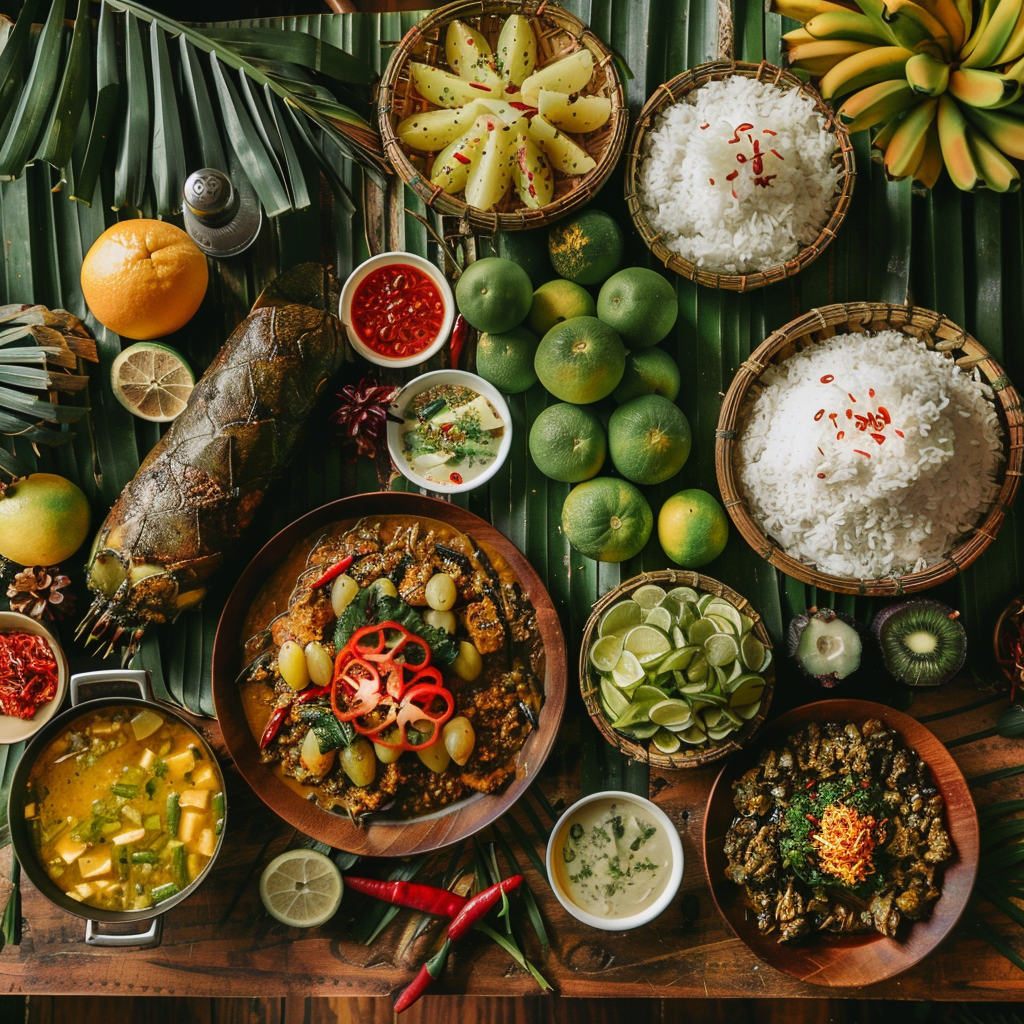
For a photo that really catches the eye, you want the right mix of colors and surfaces. Pick colors that go well with what you’re shooting – they should be strong, but not so bold they steal the show. Look closely at the different surfaces and think about how they can blend in or stand out against your chosen colors. You’re aiming for a picture where everything comes together just right: the colors and surfaces don’t outdo each other but team up to showcase the delicious look of Filipino food.
Exploring Filipino Food with Photos
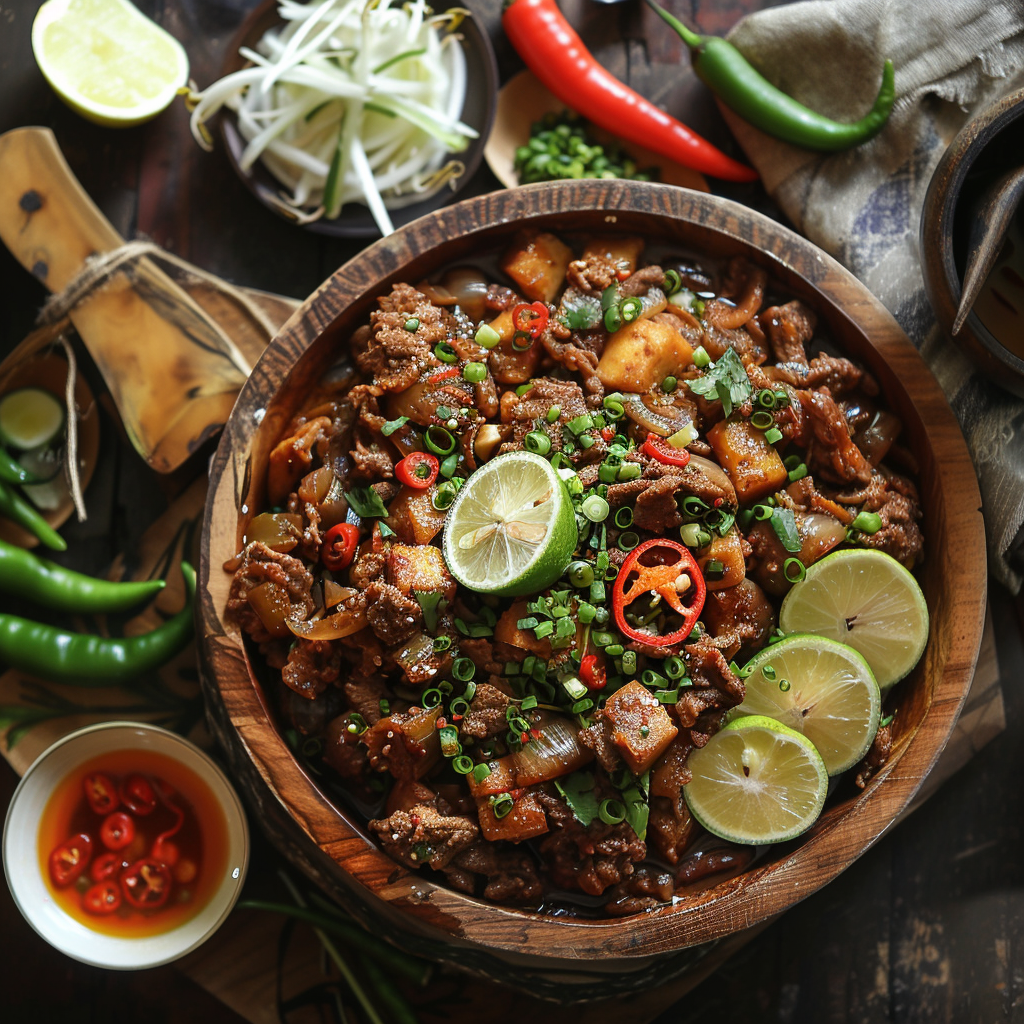
Photography lets us see the awesome variety of Filipino cuisine in pictures that do more than just show food—they tell rich stories. To truly capture Filipino cooking, photographers need to go beyond just taking photos; they need to tell stories that include local life and old traditions.
A Picture’s Story
Each photo of Filipino food should spin its own yarn. It doesn’t matter if it’s a snap of lively street food or a quiet family meal, every picture can share tales of history, society, and personal moments that are tied to Filipino food culture.
Mixing in Culture
If you want to show what Filipino food is all about, you’ve got to mix in bits of Filipino life. This might mean capturing the buzz of a busy market, showing off the traditional pots and pans, or focusing on the careful hands making the meal. These details root the food in its cultural home.
Telling Stories Through Pictures
The point of taking pictures of food, particularly when it’s as full of stories as Filipino food, is to draw people into the story being told. Creating images bursting with meaning and cultural importance lets photographers connect with folks in ways that are about more than just taste—it’s about feeling and remembering, too.
Tweaks in Filipino Food Photos
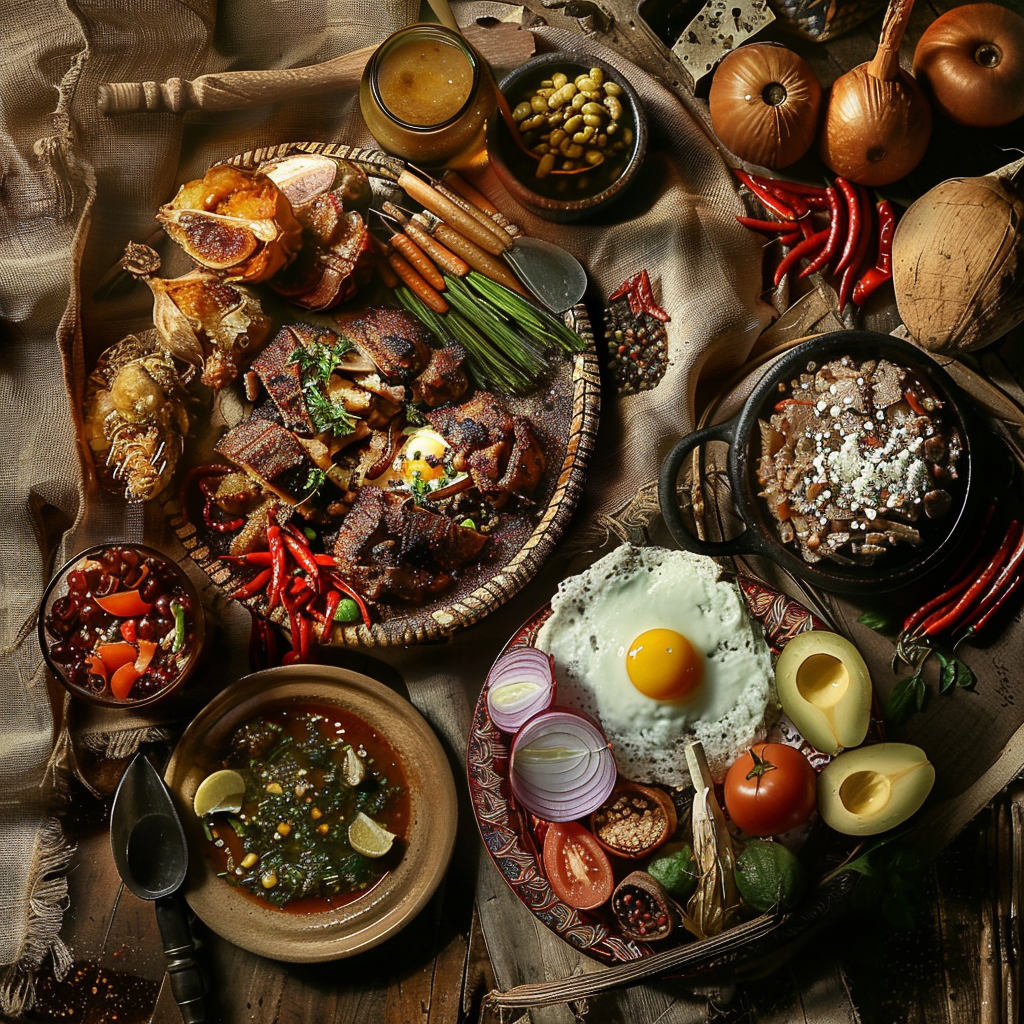
Getting the perfect shot of Filipino dishes goes beyond just snapping a pic. Making adjustments afterward is key to making your food pics look their very best. This means bumping up colors, sharpening details, and playing it straight with what’s on the plate. Let’s get into the nitty-gritty.
Making Colors Right and Bright
The look of the food can be as big of a deal as how it tastes. Messing with colors makes sure that the pic shows off what the dish really looks like. Programs like Photoshop or Lightroom are handy for fixing the light levels, spicing up the contrast, and making those shades shine.
The trick is to get those colors jumping out at you without going overboard. For Filipino food, with its strong colors and mix of stuff tossed in, just right tweaks can make the photo just as mouth-watering as the food itself.
Touch-Ups to Show Off Filipino Flavors
It’s not all about color – touching up is super important too. The main thing? Highlighting all those textures and bits and bobs that Filipino grub’s known for. Using sharpening tools wisely can point out edges and bring focus to the little things without making it all fake-looking. With a light hand, you can show off how crispy that Lechon skin is or the juicy layers of Halo-halo.
Keeping It Real with Touch-Ups
In snapping shots of scrumptious bites, truth-telling’s as important as making it look good. Sure, you can switch things up in post-processing, but keep it honest. Going overboard with edits until the plate lies is a no-go. Touch-ups should be honest work – not trickery. The goal isn’t to pull one over on anyone, but to give ’em a real-deal look at Filipino bites that’ll have ’em drooling.
Starting a Filipino Food Photography Business
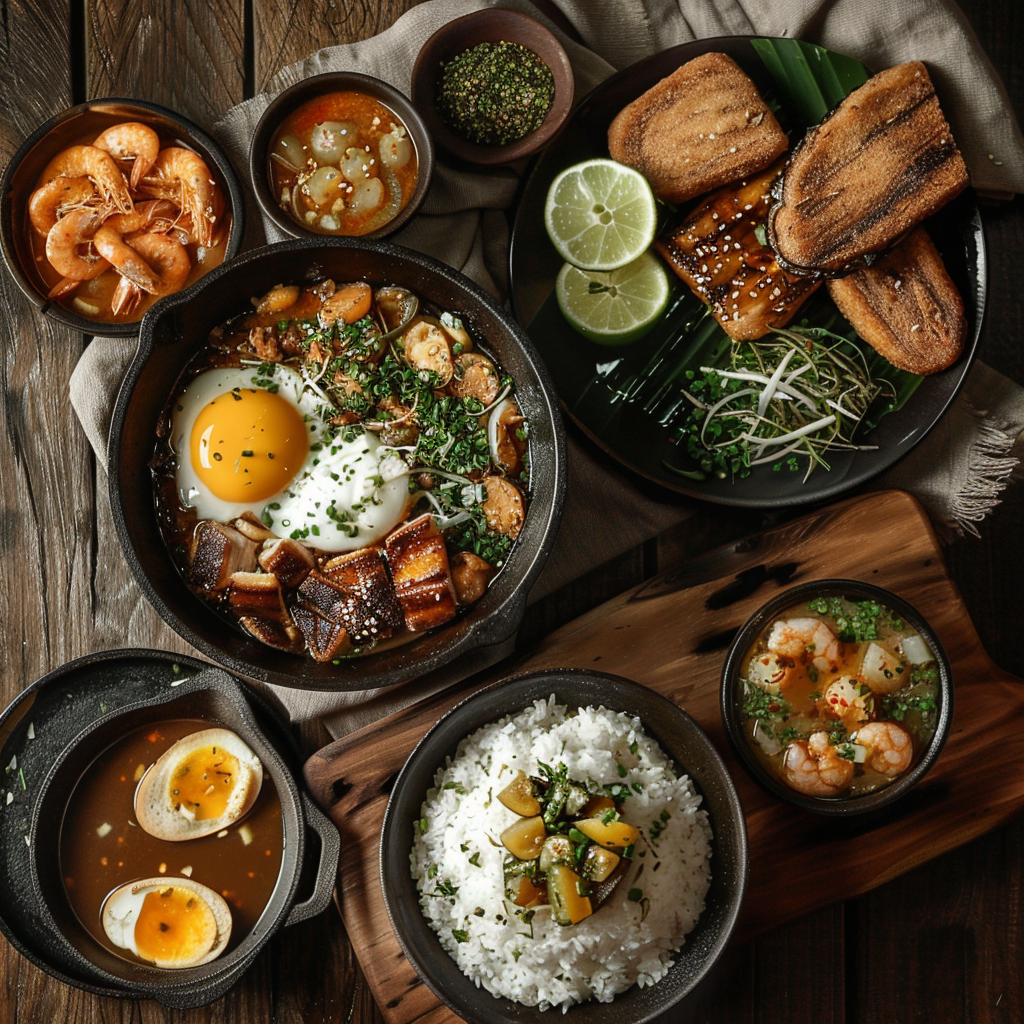
Filipino food is full of taste and has a deep history, making it a great topic for photographers. If you start taking pictures of Filipino dishes, you’re not just showing off tasty food; you’re also telling stories through your photos. To succeed in this field, photographers must be good at taking pictures that show the true nature of the food, like the bright colors of halo-halo or the rich layers of lechon.
Building a Portfolio Centered on Filipino Cuisine
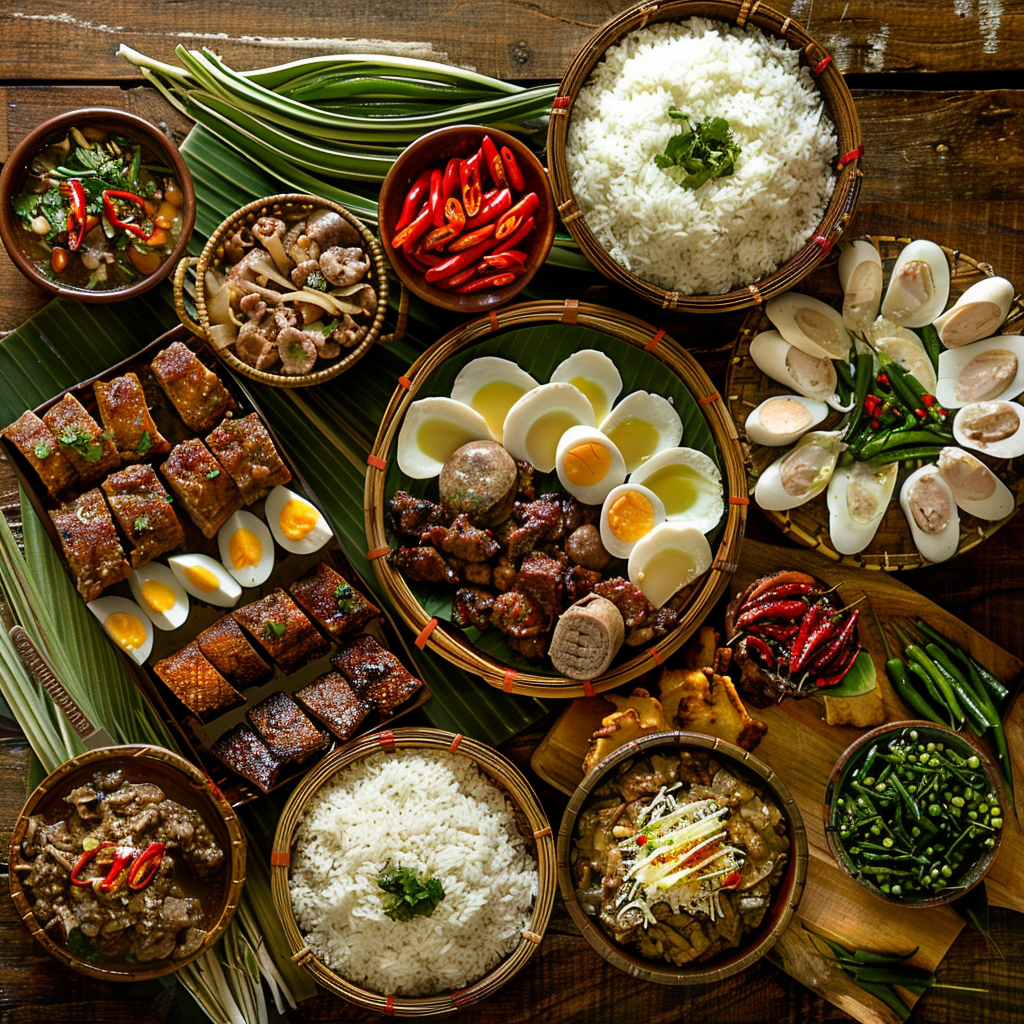
If you’re putting together a portfolio that highlights Filipino food, pay attention to the details and the culture behind it. Your photos should bring out the look and taste of these dishes with their vivid colors and textures. To really grab attention, mix it up with shots from lively street markets and fancy restaurant servings. This shows off how varied and flexible Filipino cuisine can be.
Effective Marketing for Filipino Food Photographers
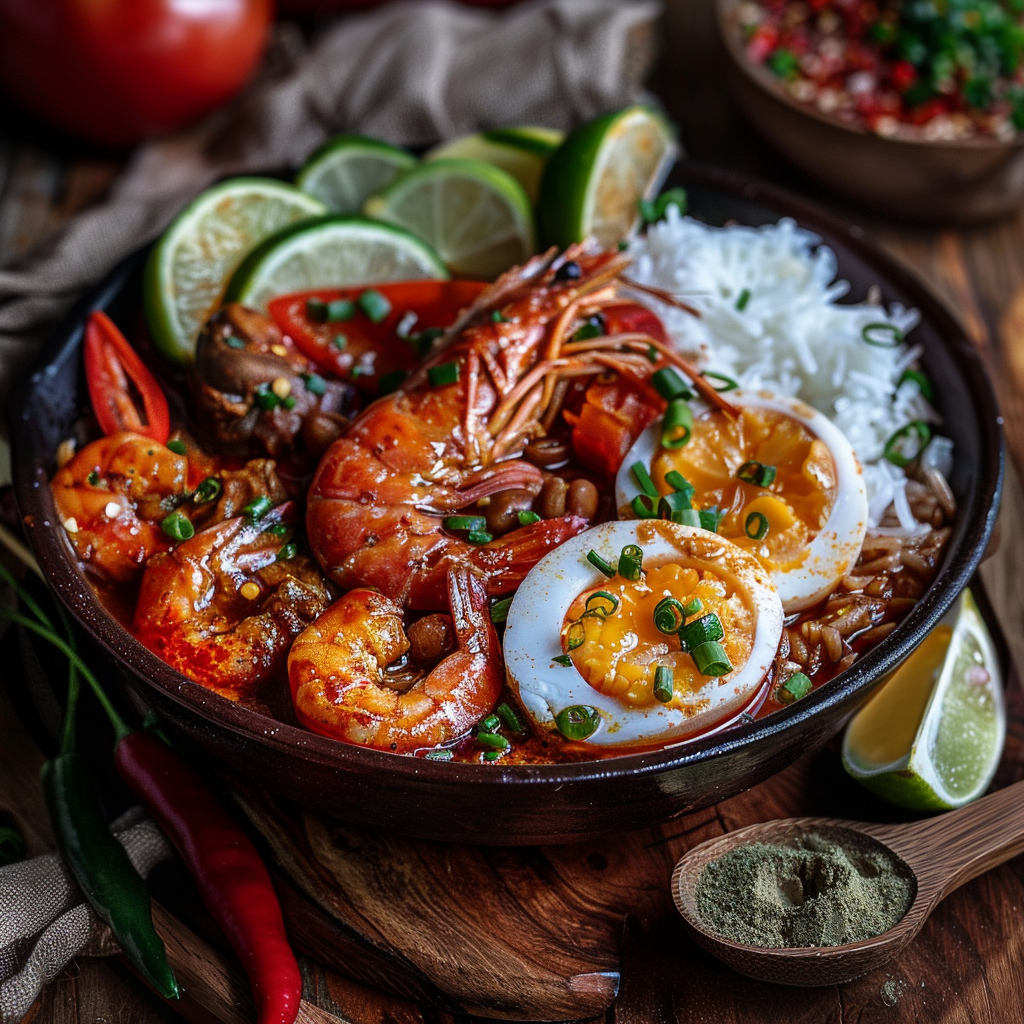
If you’re a photographer who’s into Filipino food, good marketing is key to standout. Using social media, especially Instagram, can really put your work out there. Plus, having your own slick website gives people one place to see all your best shots. Don’t forget to network! Going to food fests and meetups can get you some great contacts.
Connect with Others in the Biz
Talking and teaming up with others who know food can open doors. Maybe that’s working with a food stylist or linking up with someone who blogs about tasty Filipino eats. These kinds of connections let photographers stay in the loop with what’s hot and what’s not.
Get Smart with Social Media
Being smart about your social game can really make you shine. Regularly post top-notch pics, slap on hashtags that make sense so more folks can find you, and chat with your followers. Let them into the story behind the grub they’re drooling over.
Working with Filipino Chefs and Restaurants
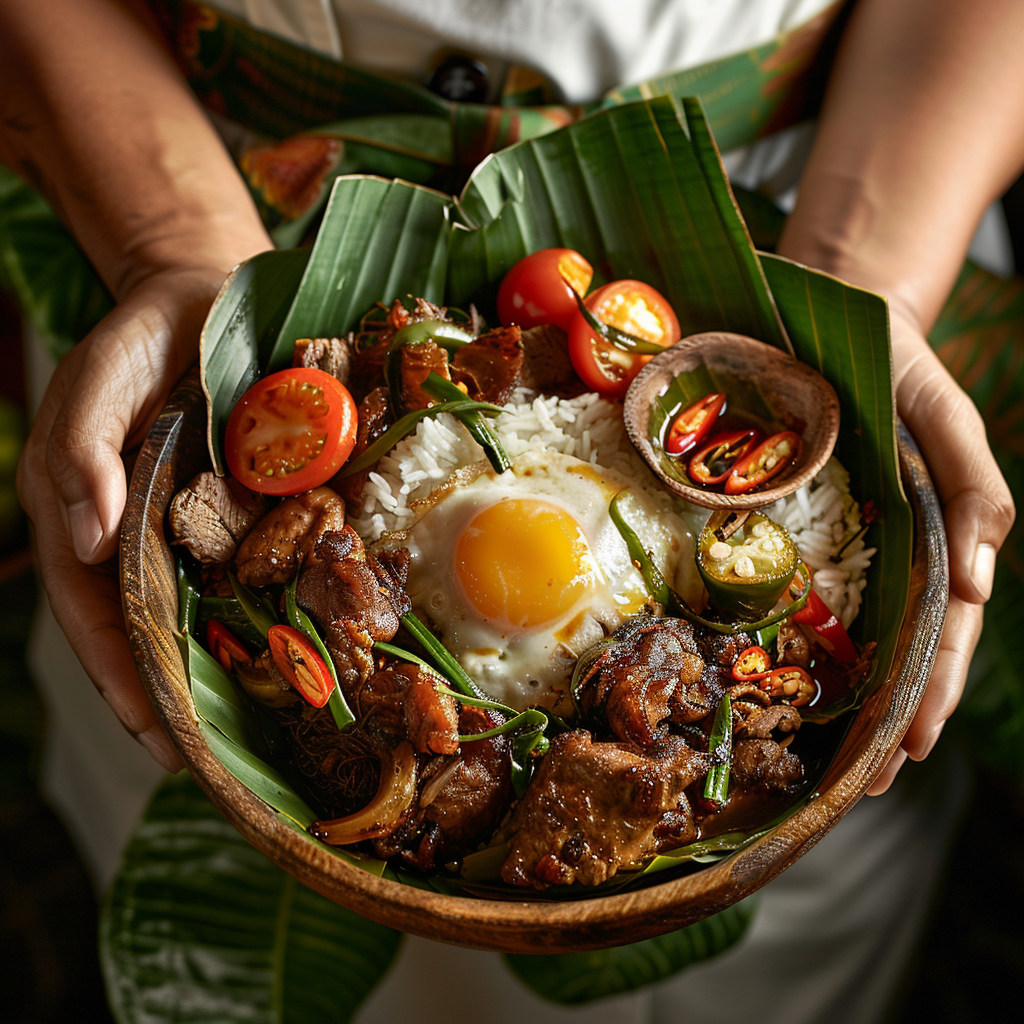
Getting into Filipino food photography means you’ve got to team up with chefs and local spots. When you do this, you snag cool shots of the cooking action and keep up with the latest food trends. Plus, these connections can land you paid gigs and new clients, pushing your career up a notch.
Building Win-Win Relationships
Make deals that help out both sides – chefs get eye-catching pics, and photographers score some exposure and practical skills. You can go straight to eateries or meet chefs at foodie shindigs to start working together.
Taking On Paid Work
When you take on paid jobs, people in the biz start seeing you as a hotshot in Filipino food photos. Nailing these shoots gets you more word-of-mouth love and clients wanting what you’ve got.
Keep in mind, oopsies aren’t part of the plan when you’re exploring new angles in photography, but sometimes they sneak in – just a little poke telling us we’ve still got stuff to learn.As you aim to capture the essence of Filipino grub through your lens, dive into every shot headfirst. Click that camera like you’re at the wildest party and make every snap count, just like the tales behind each recipe.

About Author
Rachel Noël is a professional photographer and videographer from the UK with over 10+ years of experience. Rachel specializes in Underwater, Tavel & Portrait photography among other areas.
